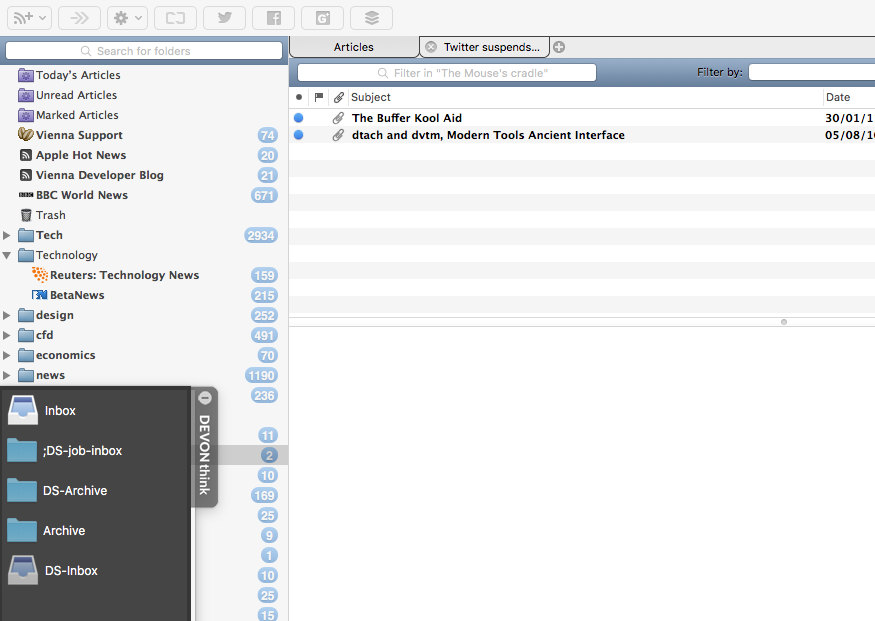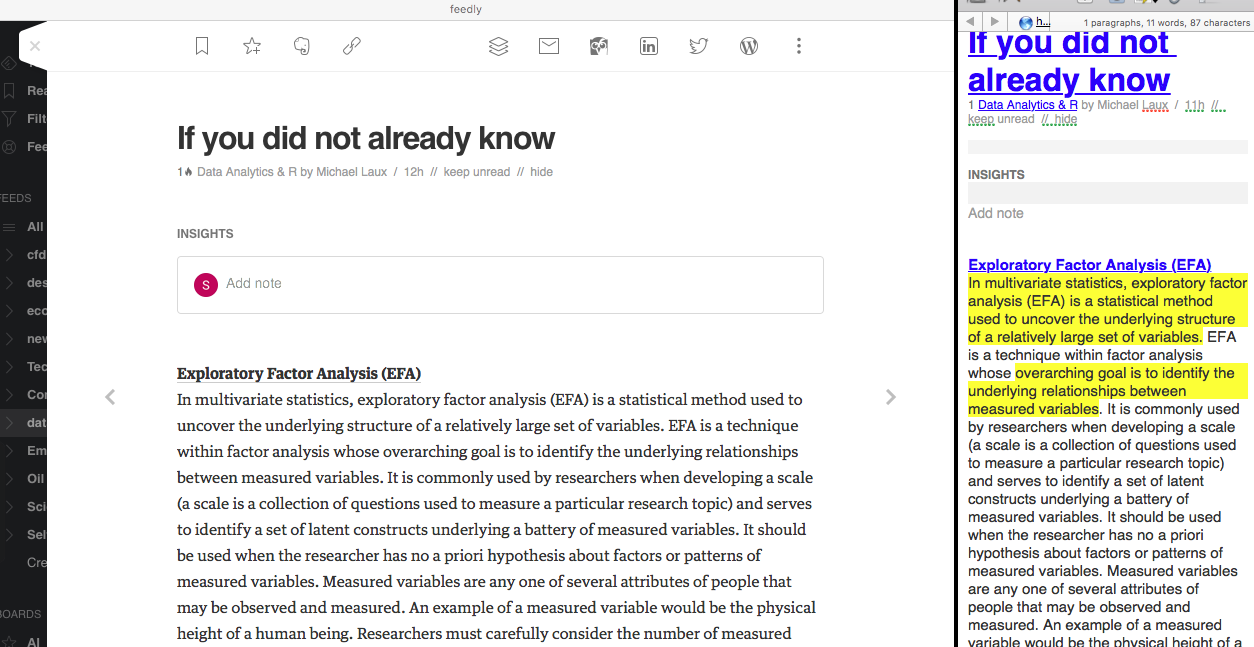Back to RSS
Why use RSS?
Off late, I had been relying more on email based content consumption. The phenomenally fast search and filtering capabilities that can be leveraged with mu4e make this easy.
Even with all these filters, it is quite difficult to keep on top of news and information from different sources. It is actually inconvenient to mix important emails and correspondence with newsletters and the like, which arrive by the dozen(s) everyday.
There’s also a nagging feeling that relevant and ‘up to date’ information is better searched through Google, with a fresh search each time. This approach invites distractions. One remedy is to link a google news feed of a search term into your RSS.
I’ve always liked RSS, however, the exploration made me actually realise that a dedicated RSS reader could inspire focused reading and aid in retention of information, and could be a better option than flooding my inbox.
An all-in-one solution for reading RSS feeds with a capable in-built browser to view images/webpages/videos would be excellent, along with the ability to sync with multiple services and facilitate capturing notes.
Exploration:
Within Emacs - Elfeed (along with Elfeed-goodies) is a good option to read feeds and is strongly integrated with Emacs and org-mode. A single keypress can be programmed to store a link as an org-heading with a note. This would really be my first choice as I’ve found it to work rather well. I can use an org file to easily organise my feeds !
Unfortunately, there seems no easy way to sync completed feeds to my iOS devices, though solutions exist for Android. I do spend a lot of time on my computer, however, it seems I can just read better and faster on my iPad and therefore a sync to mobile devices is still important.
Though it does not seem to be a mainstream recommendation on reviews like the sweet setup : Vienna is a reliable solution (open source!) to consider using to browse RSS feeds on the Mac OS. This comes with a caveat - some tinkering is required to get it to sync with a service.Vienna has inbuilt share options to share via Buffer or Twitter. Side note: I would recommend using Buffer to manage posts on multiple social media sites in a seamless manner. Buffer’s free tier should be sufficient for moderate, personal purposes. I use it to post on Twitter and Linked in simultaneously.
Harvesting information
The next consideration was harvesting notable information of interest from the RSS feeds. If not Emacs, the information has to go to DEVONThink Pro (DTP), which has a handy pull out drawer into which content can be dragged. I was able to just drag and drop the article or text selection into the DTP drawer. This appears as a URL / bookmark in DTP, and can be converted to a formatted note or web archive subsequently. A script could probably accomplish this automatically. That’s for a future project.1

Granted, an application external to Emacs (especially without a customisable keyboard driven flow) is not the desirable way to do things. Most websites usually have an RSS feed or email subscription possibility.
Opting for Feedly as a susbcription service and RSS app
Unfortunately, Vienna had to be abandoned as it felt more sensible to opt for a Feedly subscription to enable a seamless mobile experience. The Feedly app turned out to run surprisingly well on my ancient iPad and I can still drag and drop entire articles into DTP which come out to be formatted RTFD files which could be read and highlighted in leisure. While it may be nice to opt for a standalone app in the Mac for RSS feeds, the Feedly app satisfies my needs and is also available cross-platform. Note: I use the excellent Unread app to read RSS on my newer iPhone.
Besides the numerous sync options, Feedly provides other interesting features in their pro subscription, like setting up Google keyword searching and organising multiple feeds into ‘boards’. This will certainly help in enabling some level of filtering. The method of organising sources and OPML imports in the mac app is a little clunky and not comfortably intuitive, but it is usable.
There’s no easy way to use Elfeed as a feedly client either.
How to cover them all?
With numerous sources available on most topics - a technique to read is of even more importance. Besides leveraging custom boards, it seems the best way to consume content is to rapidly sweep through the titles and the short descriptions, and in parallel skim through articles of interest. If the article (even slightly) feels worth recording and reading in detail, I select the entire article and drag it into DTP via the drawer for a future session.
I try to deploy DTP as my primary reading app, because of the ability to highlight lines (which are generally available across devices). Besides aiding in skimming the article in the future, it helps me know I’ve actually read the article. This is in addition to the core ability to use DTP’s AI algorithms in searching through my notes and forming connections between ideas. I also use smart groups that show me the articles captured in the last 1 week, 2 weeks, 3 weeks, which helps me re-visit them in a structured method. The latter works rather well as a memory aid.

Future plans?
It would be ideal to setup my own server which will process the RSS feeds. Perhaps a Raspberry Pi or something else could be employed. This would be a cost efficient approach for the long term. Such a setup would enable using Elfeed to source articles from the server and thus sync with my mobile devices.
For now, I guess I will have to rely on Feedly.
-
It is probably worth noting that Feedly pro has several 3rd party integrations available out of the box including Evernote. ↩︎